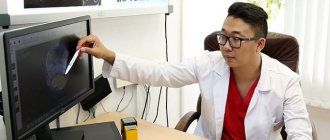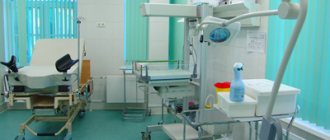Cancer is contagious
Recently, the media have been actively refuting this myth. But for a long time it was believed that cancer is a contagious disease, i.e. A cancer patient can transmit the tumor to another person.
Any infectious process includes three main components:
- the causative agent of the disease (usually some kind of microorganism, virus, etc.);
- transmission route - the path of the pathogen from a sick person to a healthy person (the most common types of transmission are airborne, alimentary, contact);
- the presence of a susceptible human organism that can become ill.
With regard to cancer, none of these points is true: the causative agent of cancer does not exist as such, since the disease has completely different development mechanisms. But still, various infections and cancer have some relationship.
Some viruses increase the risk of developing certain cancers. For example, human papillomavirus, Einstein-Barr virus (a type of herpes virus), hepatitis B and C virus, herpes virus type eight, Helicobacter pylori.
However, there are vaccines—certain medications that increase resistance to these viruses. For example, the effectiveness of vaccines against hepatitis B and human papillomavirus has already been scientifically proven and substantiated.
Thus, cancer is not an infectious disease; it is absolutely not contagious.
Eating sugar leads to cancer
Sugar is vital for cells - both tumor and healthy ones. In the human body, healthy cells try to use sugar as efficiently as possible for energy. One gram of glucose produces 38 molecules.
but tumor cells use a different mechanism, which results in the formation of only two molecules. That is, tumor cells, compared to healthy ones, receive 19 times less energy from one gram of glucose. The most popular theory explains this fact by genetic changes in the structure of the tumor.
Yes, sugar is necessary for the human body. But its excess can lead to obesity. Excess body weight increases the risk of developing certain malignant tumors.
Thus, obese people have an increased risk of developing
- uterine cancer 7 times;
- esophageal cancer 2 times;
- colon cancer 1.3 times;
- pancreatic cancer 1.5 times;
- kidney cancer 2 times;
- breast cancer 1.3 times;
Thus, sugar itself does not cause malignant tumors, but it may increase the likelihood of some of them.
Prostate cancer, testicular cancer, breast cancer, cervical cancer, thyroid cancer, lung cancer, stomach cancer, blood cancer.
Prostate cancer
Prostate cancer begins in the cells of the prostate gland. It is the most common form of cancer in men and is often diagnosed after the age of 65. Men who have a family history of prostate cancer are at greater risk of developing it at a young age.
What can you do
If you are 50 years or older, talk to your doctor about the risks and benefits of prostate cancer screening.
If you are at high risk for prostate cancer due to your family history or African ancestry, discuss starting screenings at a younger age.
The following tests may be used to detect prostate cancer early:
- digital rectal examination (DRE): physical examination of the prostate gland through the rectum. The doctor inserts a gloved finger into the rectum to check the prostate for tumors or other unusual findings.
- prostate-specific antigen (PSA) test: a blood test that measures prostate-specific antigen, a substance that the prostate secretes.
PSA and DRE tests can help detect prostate cancer at an early stage, but they can also cause a false alarm or miss the presence of prostate cancer. In some cases, these tests can detect prostate cancer that may not pose a serious threat to your health. It is important to consult with your doctor about your personal risk of prostate cancer and the benefits and risks of screening.
What to pay attention to
These signs and symptoms may be caused by prostate cancer or other health problems such as inflammation or enlargement of the prostate.
Check with your doctor if you experience the following symptoms:
- the need to urinate frequently, especially at night;
- urgent need to urinate,
- difficulty starting or stopping a stream of urine;
- inability to urinate
- weak, reduced, or intermittent urine stream;
- a feeling that the bladder has not completely emptied;
- burning or pain when urinating;
- blood in urine or semen;
- painful ejaculation.
Testicular cancer
Testicular cancer begins in the cells of the testicle. Although testicular cancer is rare, men between the ages of 15 and 49 have an increased risk of developing it. Testicular cancer is usually curable, especially if it is detected early.
What can you do
Know what your testicles look like and have them checked regularly. It is best to do this after a warm bath or shower, when the testicles descend and the scrotal muscles relax. Contact your doctor immediately if you notice anything unusual.
Get regular medical exams from your doctor, including a testicular exam.
What to pay attention to
These signs and symptoms may be caused by testicular cancer or other health problems.
Contact your doctor if you experience any of the following:
- tumor on the testicle;
- painful testicle;
- a feeling of heaviness or dragging in the lower abdomen or scrotum;
- dull pain in the lower abdomen and groin.
Source: Canadian Cancer Society, 2008
Mammary cancer
Breast cancer begins in the cells of the breast tissue. Women's breast tissue covers an area larger than the breast itself. It extends to the collarbone and from under the armpit to the sternum in the center of the chest.
Breast cancer is a diagnosed form of cancer in women. It can also occur in men, but is very rare.
Breast cancer can occur at any age, but most cases occur in women over 50. Many women are alive and well because breast cancer was detected early and treated.
What can you do
The most reliable tests for detecting breast cancer at an early stage are:
- Mammography is an X-ray examination of the mammary glands with a low dose of radiation.
- A clinical breast examination (CBE) is a physical examination of the breasts by a qualified healthcare professional.
What to do if you:
- Age 40 or older - Get a clinical breast examination by a qualified healthcare professional at least every 2 years.
- Ages 50 to 69: Get a mammogram every 2 years.
- Age 70 or older—Talk to your doctor about how often you should be tested for breast cancer.
Some women have a higher than average risk of developing breast cancer. Talk to your doctor about your personal risk and create a personalized testing plan.
It may be appropriate to start testing earlier or test more frequently if:
- you have already had breast cancer;
- your breast biopsy showed certain changes in your breasts, such as an increase in the number of abnormal cells that are not cancerous (atypical hyperplasia);
- You have a family history of breast cancer (especially if your mother, sister, or daughter was diagnosed with breast cancer before menopause, or if there are inherited mutations in certain genes, such as BRCA1 or BRCA2.
You also know how normal your breasts look, so you can notice any changes even if you get tested regularly.
Remember that the condition in your breasts may be different at different points in the menstrual cycle. They may become lumpy just before the start of menstruation. Breast tissue also changes with age. Knowing what is normal for you will help you determine which changes you should consult with your doctor about.
What to pay attention to
For most women, finding a lump in the breast is the most common sign of breast cancer. If it is tender, it is usually a symptom of a benign tumor, but this should be checked by a doctor.
Most lumps are not cancerous. These signs and symptoms may be caused by breast cancer or another breast problem.
Check with your doctor if you experience the following symptoms:
- the appearance of a lump or swelling under the armpit;
- changes in breast size or shape;
- the appearance of pitting or wrinkles in the skin - this is sometimes called “skin like the skin of an orange”;
- redness, swelling, or a feeling of increased warmth in the affected breast
- formation of an involved nipple when the nipple is directed towards the middle;
- crusting or peeling of the nipple.
Cervical cancer
Cervical cancer begins in the cells of the cervix. It usually grows very slowly. Before cervical cancer develops, the cells in the cervix begin to change and become abnormal. These abnormal cells are called precancerous cells, i.e. they are not cancer. Precancerous changes in the cervix are called cervical dysplasia.
Cervical dysplasia and cervical cancer often do not cause any symptoms in their early stages. Regular testing can help detect cervical dysplasia or cancer before symptoms appear. As a rule, both diseases are successfully treated if they are diagnosed early.
The risk of cervical cancer increases if you started having sex early or have had many sexual partners.
These factors increase your risk of contracting human papillomavirus (HPV). HPV is a group of viruses that can be easily transmitted from person to person through sexual contact. HPV infections are common and usually go away without treatment as the immune system rids the body of the virus. Only certain types of HPV can cause changes in the cells of the cervix, which can lead to cervical cancer.
What can you do
Once you become sexually active, have a Pap test every 1-3 years. A Pap smear is a laboratory test of cells taken from the cervix to look for changes. This test detects changes early, before cancer develops.
Continue to have Pap tests even after you stop having sex.
Talk to your doctor about continuing smear tests if you have had a hysterectomy (removal of the uterus, cervix and sometimes ovaries).
When you have a Pap Test, you may also be able to arrange a pelvic examination. This is a physical examination of the pelvic organs through the vagina. The doctor inserts a gloved finger through the vagina to check the cervix and pelvis for any unusual findings. This is not a test for cervical cancer, but it may detect other problems.
Use a condom during sex to increase your chances of avoiding HPV infection.
Consider getting vaccinated against HPV if you are between 9 and 26 years of age. It protects against certain HPV infections, which cause more than 70% of cervical cancers and most types of genital warts.
What to pay attention to
These signs and symptoms may be caused by cervical cancer or other health problems.
Contact your doctor if you experience any of the following:
- abnormal bleeding or bloody vaginal discharge between periods;
- unusually long or heavy menstrual periods;
- bleeding after sexual intercourse;
- pain during intercourse;
- watery vaginal discharge;
- increased amount of vaginal discharge;
- vaginal bleeding after menopause.
Source: Canadian Cancer Society, 2008
Skin cancer
Skin cancer is a fairly common disease, affecting about 1 million people worldwide every year. Check the condition of your skin regularly. Review your skin's normal condition and report any changes to your doctor.
What to pay attention to:
The following signs and symptoms may be caused by skin cancer or other skin problems.
Contact your doctor if you experience the following symptoms:
- changes in the shape, color or size of moles or warts;
- ulcers do not heal;
- areas of skin that bleed or itch, or become red and ridged.
The main types of skin cancer are:
Squamous cell carcinoma
This type of cancer usually affects the skin of the face, concentrated mainly around the mouth or on the surface of the ears. This is initially a small lump on the skin, which gradually turns into a small red spot with a scaly structure. After some time, if left untreated, the disease may begin to spread further, covering more and more areas of the skin. Without treatment, squamous cell carcinoma is fatal.
Basal cell carcinoma
This type of skin cancer is probably the most common. At the initial stage there is a slight compaction. Most often localized on the neck, head or hands. After some time, the affected area of the skin may begin to bleed, then false healing begins with the formation of a crust, and again gives way to bleeding. As basal cell carcinoma grows, it affects not only the surface of the skin, but also goes deeper. It spreads somewhat more slowly than squamous cell carcinoma. Can cover a large area.
Malignant melanoma
This type of skin cancer is the most dangerous of all the above. There is a small chance of curing it, but only at an early stage of the disease. Typically, melanoma is localized on age spots, moles, or in close proximity to them. Gradually growing, melanoma becomes convex, sometimes changes color and begins to bleed. In addition, the person suffers from unbearable itching in the affected area. Now this is a very common disease, approximately every 10 years the number of patients increases by 1.5-2 times. Of course, we cannot say that only ultraviolet radiation is to blame for this. The formation of melanoma is influenced by many factors: ultraviolet rays, hormonal, genetic, environmental, endocrine and other factors.
Skin melanoma in 80% of cases begins to develop from a mole. If a person has melanosis - excess skin pigmentation, this increases the risk of developing melanoma several times. Very often, these two diseases occur against the background of one another. Doctors believe that moles are a weak point, a kind of break in the body. There are many cases when moles begin to degenerate for seemingly inexplicable reasons.
Moles are pigmented formations on the surface of the skin that are congenital or acquired. Moles most often appear in the form of a pea or a dark brown spot. They can be flat or protrude above the surface of the skin; hair often grows from moles.
Usually moles do not cause any inconvenience to their owner, since they are a benign neoplasm. They arise due to disruption of the synthesis and metabolism of melanin. Moles can appear both in childhood and in adulthood. According to doctors' observations, a person is born practically without moles; they appear in the first year of life or later. In addition, some moles may disappear.
The growth of moles, in addition to ultraviolet rays, can be triggered by massage, trauma, hormonal treatment and many other reasons. If a mole is regularly exposed to ultraviolet rays, it will sooner or later begin to degenerate into melanoma. The most dangerous in this regard are moles located on the feet and palms, since they most often degenerate into melanoma.
Any person should immediately be alert to the following changes in moles:
- the appearance of a new pigment spot or mole;
- change in the appearance of a mole (color, shape, size);
- the edges of the mole have become jagged;
- the surface of the mole has become heterogeneous;
- the mole has acquired a scaly structure, begins to bleed, or becomes inflamed.
Diseases can be prevented by removing the mole. Only highly qualified doctors can do this.
It is strictly forbidden to remove a mole yourself. This can cause even more harm to your health.
After identifying changes occurring with the mole, you must immediately stop any contact of the damaged area of the skin with the sun's rays; sunbathing is prohibited. You need to see a doctor as soon as possible.
Before deciding to remove a mole, consultation with an oncodermatologist and dermatologist is necessary. After the necessary operation to remove a mole, a number of histological studies are needed to monitor the removed tissues. There is no universal way to remove moles. The main methods of removing moles are electrocoagulation, cryodestruction, laser removal, and surgery. In each individual case, this issue is resolved individually. In some cases, it is necessary to remove not only the mole itself, but also the healthy skin around it.
Thyroid cancer
Thyroid cancer (thyroid gland) is a malignant tumor, the cells of which have such properties as uncontrolled growth and the ability to grow over time into nearby organs with disruption of the functions of these organs (trachea, larynx, internal jugular vein, carotid arteries).
Tumors of the thyroid gland are considered dishormonal. They occur against the background of decreased thyroid function, which is caused by iodine deficiency, taking antithyroid drugs, exposure to ionizing radiation, and the genetic role of the cause of cancer has also been demonstrated.
The disease begins with the appearance of a nodule in the thyroid gland. The knot is usually of a densely elastic consistency and quickly increases in size.
The appearance of enlarged lymph nodes on the lateral surfaces of the neck indicates the presence of metastases in them. There may be a sensation of lumps in the throat, compression in the thyroid gland, hoarseness, shortness of breath, pain in the thyroid gland and neck.
If you find at least one of the above symptoms, you should contact an endocrinologist or oncologist directly.
It is mandatory to perform an ultrasound examination of the thyroid gland and neck with a puncture biopsy of the thyroid nodule followed by a cytological examination of cells from the thyroid nodule, which allows confirming the diagnosis of thyroid cancer or excluding it. If thyroid cancer is suspected, surgical treatment is indicated.
Surgical treatment consists of complete removal of the thyroid gland. Only if the disease is detected at an early stage is it possible to remove only one thyroid gland affected by the tumor.
Radiation therapy is used after surgical treatment (total removal of the thyroid gland) with the goal of completely destroying all thyroid cells. Suppressive hormone therapy with levothyroxine is prescribed for life.
The main preventive measure for thyroid cancer is ultrasound examination of the gland, which must be performed at least once every 2 years, and even better, given the prevalence of this disease, this simple examination should be done annually!
Lungs' cancer
Lung cancer is a group of malignant lung tumors that arise from cells lining the bronchi or the lungs themselves. These tumors are characterized by rapid growth and early metastasis.
Men suffer from lung cancer 7-10 times more often than women, and the incidence increases in proportion to age. In men aged 60-69 years, the incidence rate is 60 times higher than in men aged 30-39 years.
Causes
The actual mechanisms of transformation of normal cells into cancer cells are not yet fully understood. However, thanks to scientific research, it has become clear that there is a whole group of chemicals that have the ability to cause malignant degeneration of cells. Such substances are called carcinogens.
The main cause of lung cancer is inhalation of carcinogens. About 90% of all cases of diseases associated with smoking, namely with the action of carcinogens contained in tobacco smoke.
In addition, air pollution is directly related to lung cancer. For example, in industrial areas with mining and processing industries, people suffer from lung cancer 3-4 times more often than in remote villages. .
There are other risk factors for lung cancer:
- contact with asbestos, radon, arsenic, nickel, cadmium, chromium, chlormethyl ether;
- radioactive exposure;
- chronic lung diseases: pneumonia, bronchitis, bronchiectasis, tuberculosis.
What's happening?
Cancer cells quickly divide and the tumor begins to increase in size. If left untreated, it grows into neighboring organs (heart, large vessels, esophagus, spine), causing their damage.
Together with blood and lymph, cancer cells spread throughout the body, forming new tumor nodes (metastases). Most often, metastases develop in the lymph nodes, other lung, liver, brain, bones, adrenal glands and kidneys.
How to recognize?
Experienced smokers, be careful! A constant cough, bloody sputum, chest pain, as well as recurring pneumonia and bronchitis are not just unpleasant symptoms. It is possible that a serious disease process is developing in your lungs - lung cancer
Diagnostics
Unfortunately, most patients turn to doctors in the late stages of lung cancer. Therefore, it is very important to regularly undergo preventive examinations, do fluorography and consult a general practitioner, or even better, a pulmonologist, for any symptoms of pulmonary diseases that last more than 3 days.
A reliable way to detect lung cancer is to take a chest x-ray. To clarify the diagnosis, endoscopic bronchography is used, which allows you to find out the composition of the tumor and its size, as well as do a biopsy - take a piece of tissue for cytological examination.
Treatment
An oncologist treats patients with lung cancer. The doctor chooses the treatment method depending on the stage of the cancer, the type of malignant cells, the characteristics of the tumor, the presence of metastases, etc.
Usually, to rid a patient of a disease, a combination of three methods is used: surgery, medication and radiation.
Surgical treatment for lung cancer involves removing the tumor along with part of the lung. If necessary, damaged lymph nodes are also removed.
The success of treatment depends on the patient’s age and the correct selection of therapy.
If treatment was started in the early stages of the disease, 45-60% of patients have a chance to fully recover, and 90% have a chance to live at least another five years. If the disease is discovered too late, when metastases have already appeared, there are no guarantees.
Source ; www.medportal.ru
Stomach cancer
Gastric cancer is a malignant tumor growing from the epithelial cells of the mucous (inner) lining of the stomach. The tumor can occur in different parts of the stomach: in the upper part where it connects to the esophagus, in the main part of the stomach or in the lower part where the stomach connects to the duodenum.
The risk of developing stomach cancer increases in both men and women after 50 years of age, but in the stronger sex this probability is twice as high.
Causes
It is known that a normal cell transforms into a cancerous one if a certain mutation (defect) occurs in its chromosomes. But what exactly causes this mutation in stomach cancer?
Despite all the advances of medicine in the study of cancer, the cause of malignant degeneration of stomach cells still remains unclear. At the moment, only a group of risk factors has been identified that, under unfavorable circumstances, can provoke this serious disease.
Risk factors for developing stomach cancer:
- Hereditary predisposition - if someone in the family is diagnosed with stomach cancer, all other close relatives have a 20% increased chance of getting the disease;
- Dietary features - excessive consumption of smoked, spicy, salted, fried (overcooked) and canned foods, consumption of foods that are stored for a long time, containing nitrates, significantly increases the likelihood of stomach cancer;
- Long-term stomach diseases: gastritis (low acidity), ulcers and stomach polyps; — gastric surgery increases the risk of developing stomach cancer by 2.5 times;
- Presence of the bacterium Helicobacter pylori in the stomach: in 1994, the World Health Organization (WHO) recognized the connection between Helicobacter pylori and stomach cancer and classified this bacterium as a class 1 carcinogen;
- Working with asbestos and nickel;
- Deficiency of vitamins B12 and C;
- Primary and secondary (for example, AIDS) immunodeficiencies;
- Stomach cancer is 20 times more common in patients with pernicious (malignant) anemia;
- Some viruses, in particular the Epstein-Barr virus;
- Alcoholism;
- Smoking.
What's happening?
It has now been proven that in a completely healthy stomach, cancer practically does not occur. It is preceded by a so-called precancerous condition - a change in the properties of the cells lining the stomach. Most often this happens with chronic gastritis with low acidity, ulcers and stomach polyps.
On average, it takes 10 to 20 years from precancer to cancer. At the initial stage of cancer, a small tumor less than 2 cm in size appears in the stomach. Gradually it increases, grows in depth (it grows through all layers of the stomach wall) and in width (spreads over the surface of the stomach). A stomach tumor can interfere with digestion. If it is located on the border with the duodenum, it will prevent the passage of food into the intestines. Located near the esophagus, stomach cancer will prevent food from entering the stomach. As a result, the person begins to lose weight sharply. Growing into the wall of the stomach, the tumor spreads to other organs: the colon, small intestine, pancreas, retroperitoneum.
Stomach cancer is prone to the early appearance of a large number of metastases: some cancer cells separate from the original tumor and spread through the body (for example, along with the blood and lymph flow), forming new tumor nodes (metastases). In gastric cancer, metastases most often affect the lymph nodes and liver. In addition, the ovaries, fatty tissue, peritoneum, navel, bones, lungs, etc. can be affected. As a result, the functioning of all damaged organs is disrupted, which ultimately leads to death.
How does it manifest?
Small tumors often remain asymptomatic.
Only in some cases may patients experience:
- Decreased appetite;
- Change in food preferences: for example, they have an aversion to meat, fish, etc.;
- Increase in temperature (usually not higher than 37-38 ° C);
- Anemia (decreased hemoglobin).
As stomach cancer grows, new symptoms appear:
- Feeling of heaviness in the stomach after eating, nausea and vomiting, rapid satiety;
- Diarrhea, constipation;
- Pain in the upper abdomen;
- Pain radiating to the back (when the tumor spreads to the pancreas);
- An increase in the size of the abdomen, accumulation of fluid in the abdominal cavity (ascites);
- Weight loss;
- If the tumor destroys blood vessels, gastrointestinal bleeding may develop.
Diagnostics
The earlier the diagnosis is made, the more successful the treatment of the disease will be. At the slightest suspicion of stomach cancer, and in general for any digestive problems, immediately seek help from a gastroenterologist.
The main method of examining the stomach is gastroscopy. During gastroscopy, the doctor assesses the condition of the gastric mucosa and performs a biopsy of the most suspicious areas. Histological examination of the material obtained during biopsy allows us to answer the question: is the tumor benign or malignant?
Additional methods are used:
- X-ray examination of the digestive tract;
- Computed tomography,
- Ultrasound of the abdominal organs;
- General and biochemical blood tests (can detect anemia and protein metabolism disorders in the patient’s body) and others.
Treatment
The success of treatment for stomach cancer directly depends on the size and spread of the tumor to neighboring organs and tissues, as well as the presence of metastases.
The main method of treatment is surgical, which involves removing the tumor along with the stomach (gastrectomy) or part of it. In some cases, in addition to the stomach, the spleen, part of the liver or intestines are removed. After surgery, chemotherapy or radiation therapy may be prescribed.
Source: - www.medportal.ru
Blood cancer
Blood cancer is a whole group of tumor diseases of hematopoietic tissue. What we are accustomed to consider “blood cancer”, oncologists call “hemoblastosis”. In the event that cancer cells occupy the bone marrow (the place where blood cells are formed and mature), hemoblastoses are called leukemia. If tumor cells multiply outside the bone marrow, we are talking about hematosarcoma.
Leukemia (leukemia) is also not one disease, but several. All of them are characterized by transformation of the type of hematopoietic cells into malignant ones. In this case, cancer cells begin to multiply and replace normal bone marrow and blood cells.
Depending on which blood cells have turned cancerous, there are several types of leukemia.
For example, lymphocytic leukemia is a defect of lymphocytes, myeloid leukemia is a violation of the normal maturation of granulocytic leukocytes.
All leukemias are divided into acute and chronic.
Acute leukemia is caused by the uncontrolled growth of young (immature) blood cells.
With chronic leukemia, the number of more mature cells sharply increases in the blood, lymph nodes, spleen and liver. Acute leukemia is much more severe than chronic leukemia and requires immediate treatment. .
Causes
For a person to develop leukemia, it is enough for one single hematopoietic cell to mutate into cancer. It begins to divide rapidly and gives rise to a clone of tumor cells. Cancer cells quickly divide, gradually take the place of normal ones, and leukemia develops.
Possible causes of mutations in the chromosomes of normal cells are as follows:
1. Effect of ionizing radiation. 2. Carcinogens. These include some medications (butadione, chloramphenicol, cytostatics (antitumor)), as well as some chemicals (pesticides, benzene, petroleum distillation products that are part of varnishes and paints). 3. Heredity. This mainly applies to chronic leukemia, but in families where there were patients with acute leukemia, the risk of getting sick increases 3-4 times. It is believed that it is not the disease that is inherited, but the tendency of cells to mutate. 4. Viruses. There is an assumption that there are special types of viruses that, when integrated into human DNA, can transform a normal blood cell into a malignant one. 5. The occurrence of leukemia to a certain extent depends on the race of a person and the geographic area of his residence.
How to recognize?
It is unlikely that you will be able to diagnose yourself with leukemia, but you definitely need to pay attention to changes in your well-being.
Keep in mind that acute leukemia is accompanied by high fever, weakness, dizziness, pain in the limbs, and the development of severe bleeding.
This disease can be accompanied by various infectious complications: ulcerative stomatitis, necrotizing tonsillitis.
There may also be enlargement of the lymph nodes, liver and spleen.
Chronic leukemia is characterized by increased fatigue, weakness, poor appetite, and weight loss. The spleen and liver enlarge. At a late stage of the disease, infectious complications and a tendency to thrombosis occur.
Diagnostics
In most cases, the diagnosis of blood cancer cannot be made on the basis of a general and biochemical blood test. To confirm the diagnosis of blood cancer, it is also necessary to conduct a bone marrow examination (puncture, trepanobiopsy).
Treatment
To treat acute leukemia, a combination of several antitumor drugs and large doses of glucocorticoid hormones is used. In some cases, a bone marrow transplant is possible. Supportive measures are extremely important - transfusion of blood components and rapid treatment of infection, the likelihood of which is very high in leukemia.
For chronic leukemia, so-called antimetabolites are currently used - drugs that suppress the growth of malignant cells.
In addition, radiation therapy or the injection of radioactive substances such as radioactive phosphorus are sometimes used. The doctor chooses the treatment method depending on the form of leukemia. The patient's condition is monitored using blood tests and bone marrow tests. You often have to be treated for leukemia for the rest of your life.
Sources; www.medportal.ru, https://stopcancer.org.ua
Read also:
- Oncology will be detected by SCREEN
- Self-examination
- Mole care
- Traumatized mole
- Moles
- Treatment of melanoma
- Diagnosis of melanoma
- Is it possible to detect melanoma in its early stages?
- Can melanoma be prevented?
- What are the causes of melanoma
- Risk factors for melanoma
- How common is melanoma?
- Skin cancer
- WHO. Cancers caused by environmental factors
- Sunburn. Symptoms, prevention, treatment
- The Ministry of Health of the Republic of Kazakhstan will develop a program to combat oncology
- February 4 is World Cancer Day
- How to detect cancer early
- WHO. Cancer Prevention
- September 15 is World Lymphoma Awareness Day
- Chief oncologist of the Ministry of Health: some types of cancer develop unnoticed
- Carcinogens that can cause tumors to develop in the body
- Consultation with a specialist. Ways to help reduce the risk of developing malignant tumors
- In 2021, a number of events will be held in Crimea to inform the population about the incidence of cancer
- Crimean Oncology Center will join the European Week of Early Diagnosis of Head and Neck Cancer in Russia
- Oncologists of Astrakhan and the Republic of Crimea signed a cooperation agreement
- Oncocardiology - a new integral specialty
- In Crimea, 56.4% of cancer patients have been registered for five or more years
Frequent use of mobile phones affects the development of tumors
Why did such a myth arise? The researchers explain:
- radio waves are absorbed by biological tissues, i.e. radiation affects the cells of our body;
- the number of mobile phones is increasing every year;
- The time spent using mobile phones is increasing as communications have become more accessible, widespread and cheaper;
- the number and duration of calls increases.
The researchers had the idea to test experimentally whether the occurrence of brain tumors is really associated with the use of mobile phones.
The INTERPHONE study involved more than 5 thousand people with brain tumors. Experts collected data on the frequency of use of mobile phones by patients. It turned out that there is no cause-and-effect relationship between the occurrence of a brain tumor and the use of a mobile phone.
Leading organizations in the world such as the American Cancer Society, National Institute of Environmental Health Sciences, Food and Drug Administration (FDA), CDC (Department of Health and Human Services, USA) have expressed their opinion that mobile phones are completely safe.
Thus, the occurrence of brain tumors is not associated with the use of mobile phones; gadgets do not even increase the risk of cancer.
Can the tumor resume its growth after treatment?
Resumption of tumor growth after treatment is called relapse.
Despite treatment, in some cases, thyroid cancer can return even if the thyroid gland has been completely removed. This can happen if microscopic cancer cells have spread beyond the thyroid gland before it is removed and remain in surrounding tissue or lymph nodes.
Recurrence of thyroid cancer may manifest as:
- thyroid tissue left during surgery (local relapse);
- lymph nodes of the neck (regional metastases);
- other parts of the body (distant metastases).
Recurrent thyroid cancer can also be cured. It is important to identify it at the earliest stage. To do this, after treatment, patients must remain under the qualified supervision of an oncologist and endocrinologist.
Doctors at the Rassvet clinic will prescribe the necessary blood tests and thyroid scans at certain time intervals - for proper monitoring after treatment and to identify early signs of relapse.
Cancer is a death sentence
The outcome of treatment and the speed of rehabilitation of a cancer patient are influenced by various factors.
These include:
- biological type of tumor (different tumors have different prognosis),
- localization, prevalence and size of the tumor,
- presence and characteristics of concomitant diseases,
- tumor treatment methods,
- patient's age.
There is also such a thing as stages of cancer. The stage determines only survival, i.e. probability of living for a certain period of time. The higher the stage, the lower this probability.
As a rule, when treating malignant tumors, oncologists use an indicator such as five-year survival rate.
According to global data, the average five-year survival rate for major cancers (lung, breast, colon, prostate, skin cancer) is 60%. This is a fairly high figure.
Survival depends on the type of tumor. One of the lowest survival rates is observed for pancreatic cancer, and one of the highest for skin cancer (basal cell).
Thus, cancer is not always a death sentence for a person. With the development of technology, most types of cancer are curable.
Classification of cervical cancer by histological type
In 2003, WHO developed a classification system for cervical cancer.
According to it, cervical cancer can be divided into the following subtypes:
- precancerous diseases;
- squamous cell carcinoma;
- adenocarcinoma;
- other tumors that form in the epithelial layer;
Each subgroup includes different types of tumors, which have characteristic features and symptoms. If we talk about methods of treating these types of cancer, foreign medicine has shown the best results. For example, treatment of cervical cancer in Israel today is based on accurate determination of the type of tumor and the use of cutting-edge medical developments.
If there were no cases of cancer in the family, then I won’t have it either.
About 95% of malignant tumors are sporadic, i.e. they do not depend on whether blood relatives have had cancer or not.
But there are certain risk factors that increase the likelihood of developing cancer. First of all, it's age. Age is the only risk factor that we cannot influence. Risk factors also include alcohol consumption, smoking, long-term chronic inflammatory diseases and so-called carcinogenic factors.
But all of them only increase the likelihood of occurrence - nothing more, i.e. the presence of these factors will not necessarily lead to the development of a tumor in a person.
But in 5% of cases there are hereditary tumors, hereditary cancer syndromes: Cowden syndrome, Lynch syndrome, Gardner syndrome, Li-Fraumeni syndrome, multiple endocrine neoplasia syndrome and some others.
If a person has any of these inherited syndromes, then they need to undergo screening programs several years or even decades earlier than others.
Thus, only in 5% of cases can cancer be inherited, and in most cases the presence of cancer has nothing to do with heredity.
Who is to blame and what to do
“The main cause of melanoma is ultraviolet radiation. People who spend most of the year at home and in the office, and then go on vacation to the open sun or regularly use the services of solariums, expose themselves to great risk,” says Andrey Pylev.
You need to be very careful with the daylight. People who live in sunny countries all year round are well aware of this.
Despite the fact that the skin of the inhabitants of these regions contains more melanin, and therefore is better protected from ultraviolet radiation, most often they wear light, loose clothing that completely covers the body, a hat that protects the head and face, and use sun creams.
Many people use umbrellas. Residents of the middle zone should follow their example in this regard and not try to tan in four to five hours while being in the open sun in the middle of the day.
The cause of melanoma is a defect in the DNA molecule of the pigment cell, which ensures the storage and transmission of genetic information. If, under the influence of UV rays or other unfavorable factors, a breakdown occurs in the melanocyte, it mutates.
Melanoma can develop in anyone, but women with weakened immune systems are more susceptible to it, as well as people who have undergone organ transplants or other complex interventions in the immune system.
Treatment for cancer is worse than the disease itself
There is a myth that living with cancer is physically easier for the patient compared to treating the tumor.
Today, three main methods of treating malignant tumors are used: surgery, chemotherapy and radiation therapy. As a rule, all three methods are used in combination.
There are many undesirable consequences of cancer treatment, including baldness, weakness, nausea, cardiotoxicity and many others.
The consequences of cancer treatment affect the quality of life, but with the availability of a wide range of medications, they are much easier to tolerate.
An oncologist has two global goals: to increase the patient’s life expectancy and to improve his quality of life. In this situation, it can be difficult to strike a balance.
Cancer patients want to know as much as possible about their diagnosis, causes, possible consequences and proposed treatment methods. Most often, patients trust the method recommended by the doctor. Experts try to minimize the negative consequences of therapy.
Thus, treatment of a malignant tumor in most cases is no worse than living with this disease.
Methods of treating oncopathologies
Cancer is a serious disease, and when patients hear this diagnosis, they often immediately judge themselves. But cancer research is moving forward. Therefore, now we cannot say that this is a disease that necessarily leads to death.
There are several paths to recovery, the first of which is surgical. The tumor is removed to prevent diseased cells from continuing to grow. At the first stage of cancer development, surgical intervention can completely eliminate the further development of pathology.
Chemotherapy
– This is treatment with drugs that suppress the functioning of cancer cells. This causes them to stop dividing and the tumor stops growing.
Irradiation
is a type of treatment that uses high-energy rays that kill diseased cells. Used in conjunction with surgery and chemotherapy.
Hormonal treatment
used if the mammary glands are affected. This treatment suppresses the increase in the number of diseased cells.
Immunotherapy is also used
, during which the body’s immunity is stimulated to work. Through this treatment, the cells are destroyed by antibodies.
In addition, there is treatment with inhibitors that interact with proteins of diseased cells, causing them to stop dividing. Oncology treatment is individualized, and several methods are almost always used together.
The Clinic of Dr. Paramonov employs highly qualified oncologists and uses advanced methods and developments in the treatment of oncological pathologies. You can make an appointment with an oncologist by calling 8 (8452) 66-03-03.
Depression contributes to cancer
There is a misconception that negative emotions and severe depression can lead to cancer.
A study was conducted in which people with severe forms of depression took part. As a result, it was proven that the risk of developing a malignant tumor in people with depressive disorders is exactly the same as in people without such disorders.
Thus, a bad mood has absolutely no effect on the occurrence and development of a tumor and is not even a risk factor for its development.
Melanoma
Traditionally, melanoma is considered one of the most dangerous tumors, because its mortality statistics are one of the highest, says Evgeny Glukhov. However, the specialist notes that it does not occur so often - in about 4% of cases.
“In approximately 10% of patients, the disease is hereditary. The main risk factor is ultraviolet radiation. The source of this radiation does not matter - it can be artificial or natural. For example, it has already been proven that solariums are not nearly as safe as the beauty industry is trying to present. I would say that sunbathing is harmful in principle, and excessive sunbathing is already dangerous,” says the oncologist.
So you should treat your health more carefully and not subject it to tests in the form of excess sun (natural or artificial), unhealthy food and bad habits. This will minimize risks. Those who have a family history of cancer should be especially careful. If any alarming symptoms develop, you should not self-medicate and persuade yourself that it will go away on its own, it is better to undergo an examination and eliminate potential risks. After all, in the case of cancer, time is the most valuable resource, and treatment started as early as possible has a more positive effect.
Will vaccinations and a healthy lifestyle protect you from cancer? How to protect yourself from head and neck tumors Read more
GMOs cause cancer
GMO (genetically modified organism) is an organism whose genotype has been artificially changed. People have been breeding GMOs for quite a long time. One of the main methods for obtaining GMOs is selection.
At the moment, there are no studies that the consumption of GMOs leads to the development of cancer.
Thus, GMOs do not lead to the development of cancer; science has not proven otherwise.
Rare types of cervical cancer
Some types of cervical tumors are very rare (1-1.5% of clinical cases). These types of cancer are extremely aggressive and most dangerous for the female body.
The following rare types of tumors are distinguished:
- Mucin-producing cervical cancer is diagnosed in 25-35% of cases. It is characterized by the presence in the tumor of intracellular mucin that does not form glandular structures. This type of cancer is also known as mucoepidermoid cancer. In this case, the tumor only has a predisposition to keratinization, but in some cases “cancer pearls” are found. An excess of mucin can cause the formation of signet ring cells. This type of tumor is quite aggressive.
- Neuroendocrine cervical cancer – originates from neuroendocrine particles. Such tumors can be monomorphic or mixed. Moreover, the latter have a glandular-squamous structure, in which neuroendocrine particles are present. The size of the tumor ranges from 0.5 cm to 10 cm.
- Clear cell cervical cancer is most often diagnosed in women over 40 years of age. More than 35 years ago, scientists established that there is a relationship between the occurrence of this type of cancer and taking diethylstilbestrol during pregnancy. Girls born to mothers who took this drug while pregnant are prone to developing clear cell cancer. Such tumors are not sensitive to hormonal drugs. Due to the fact that the tumor has a clear localization, it is quite easy to treat.
It is important to note that today foreign medicine has the capabilities not only for early diagnosis, but also for successful treatment of any type of cervical cancer.
People with dark skin do not get skin cancer
Statistically, skin cancer occurs more often in people with fair skin.
The main cause of skin cancer is exposure to ultraviolet rays. Protection against them is provided by melanin, which is less in people with fair skin.
A study by scientists has confirmed that skin cancer occurs in people with dark skin. But the survival rate of such dark-skinned patients is much lower than that of lighter-skinned patients. This is due to the difficulty of detection and the frequency of detection, since it is more difficult to detect a neoplasm on dark skin than on light skin.
One notable example is reggae musician Bob Marley, who died at the age of thirty-six from late-diagnosed acral melanoma, a melanoma that develops on the skin of the nails.
Thus, skin color has no effect on the risk of skin cancer, and people with dark skin can also be diagnosed with it.
Advice for patients diagnosed with thyroid cancer
A cancer diagnosis can be overwhelming and frightening. Everyone finds their own way to cope with this blow. Try to follow our recommendations to ease your psycho-emotional state and find new strength to fight the disease.
Find out enough information about thyroid cancer to make decisions about your treatment. Ask your doctor for a detailed description of your condition—type, stage, and treatment options. Use this data for more detailed information. Ask your doctor about reliable online information resources.
Connect with other thyroid cancer survivors. You may find comfort in talking to people who are in the same situation. Ask your doctor about patient groups, or connect through online communities.
Do everything you can to maintain your health. You can't control the progression of thyroid cancer, but you can take steps to maintain your overall health during and after treatment. For example, eat a healthy diet, include as many fruits and vegetables as possible, be physically active, and try to get enough sleep.
Antiperspirant use leads to breast cancer
A study was conducted in which 813 women aged 20 to 74 years with breast cancer took part.
According to this study, the use of antiperspirants is absolutely not associated with the development of breast cancer.
Subsequently, several more studies were conducted that similarly confirmed the absence of a cause-and-effect relationship between the occurrence of breast cancer and the use of antiperspirants.
Thus, there is currently no evidence linking the use of antiperspirants and the occurrence of breast cancer.
Precancerous diseases of the cervix
The development of cervical cancer is preceded by so-called “precancerous diseases”. They are pathological processes that occur for a number of reasons in the epithelial layer of the organ. In the absence of timely diagnosis and treatment, such processes can progress, the affected epithelial cells mutate and turn into malignant neoplasms.
There are the following types of cervical precancer:
- diseases of the cervical epithelium (erosion, dysplasia, condylomas, inflammatory processes);
- cervical cancer in situ.
A sign of such precancerous changes in the cervix is that all of them do not leave the boundaries of the integumentary epithelium and do not penetrate into the deep layers of the organ. It is worth noting that treatment in Israel in this case is aimed at preventing precancerous diseases and their early diagnosis.
Breast implants lead to breast cancer
In fact, women who have and those who do not have implants are equally at risk for breast cancer.
But there is a very rare disease - anaplastic large cell lymphoma of the breast. This is not a disease of the breast tissue, but of the lymph nodes. And it is the presence of breast implants that influences the development of this disease.
The basic risk of developing this disease is three per 100,000,000 cases, and the risk of development in the presence of implants is already 203 per 100,000,000 cases, i.e. the risk increases by 67 times. However, the absolute incidence of this disease is extremely small.
Thus, breast implants are not associated with breast cancer, but do increase the risk of breast lymphoma.
Hoarse voice, discomfort in the nose
— Alexander Alexandrovich, how timely is diagnosis made now in ENT-oncology? How often is the disease detected at an advanced stage?
— As a rule, in half of the cases, in the area of the ENT organs (sinuses, ethmoid bone, nasal cavity, pharynx, larynx, very rarely ears), patients do not notice malignant changes; they are detected at stages 2-3, when the process has already gone far. Although the first symptoms appear very early.
- What are these symptoms?
— Discomfort, sensation of a foreign body, lump in the throat, difficulty, for example, nasal breathing, and later, as a rule, pain occurs. If it is the larynx - hoarseness. But people live with these symptoms for months, some are simply afraid to go to the doctor, and others, like smokers, do not pay attention to them.
— Is constant nosebleeds also a symptom?
- Yes, this is one of the symptoms of a tumor in the nasal cavity. As well as difficulty breathing.
— Are these aggressive forms of cancer? How fast are they developing?
— It cannot be said that all tumors of the larynx and nasopharynx are fast growing or, conversely, slow growing. They are all completely different. There are fast-growing ones, for example lymphoma. But if the tumor is located exclusively in the vocal fold, it may grow slowly.
— How long can the growth process take? Can it last for years?
- Of course not, this is nonsense.
— When does the degree of aggressiveness of cancer become clear?
- With a biopsy, it is clear what kind of cancer it is - well-differentiated or poorly differentiated. Upon examination, we see that the tumor may be small, but metastasis to other organs is already significant. I have had elderly patients who were still living with stage 4 laryngeal cancer for two to three years. The tumor was in a frozen state. They had a tracheostomy done, and they periodically came to change it. It is clear that they could not receive full treatment, only palliative chemotherapy.
How to protect yourself from misconceptions?
In order not to succumb to common misconceptions, it is necessary to develop critical thinking.
A critical assessment of any information that comes to you can remove many contradictions and protect against misconceptions and myths in matters of health.
Good advice for doctors would be to use recommendations and methods of evidence-based medicine, which suggests relying only on scientifically proven actions that are safe for the patient’s health.
There is a certain decision-making algorithm that doctors try to follow:
- Select the question you want answered.
- Get the best evidence, the best answers.
- Critically evaluate the best answers and evidence.
- Use the information you have critically read and comprehended in relation to your clinical practice.
Also, at any stage, it is necessary to pay attention to the use of reliable sources of information.
Cost of consultation for ovarian cancer?
| Name of service | Price, rub.) |
| Initial appointment with an oncologist | 2000 rub. |
| Repeated appointment with the oncologist | 1500 rub. |
| Primary appointment with a general practitioner | 2000 rub. |
| Repeated appointment with a general practitioner | 1500 rub. |
| Prescription of treatment (drawing up an individual treatment regimen) | 1500 - 3000 rub. |
All our services and prices









